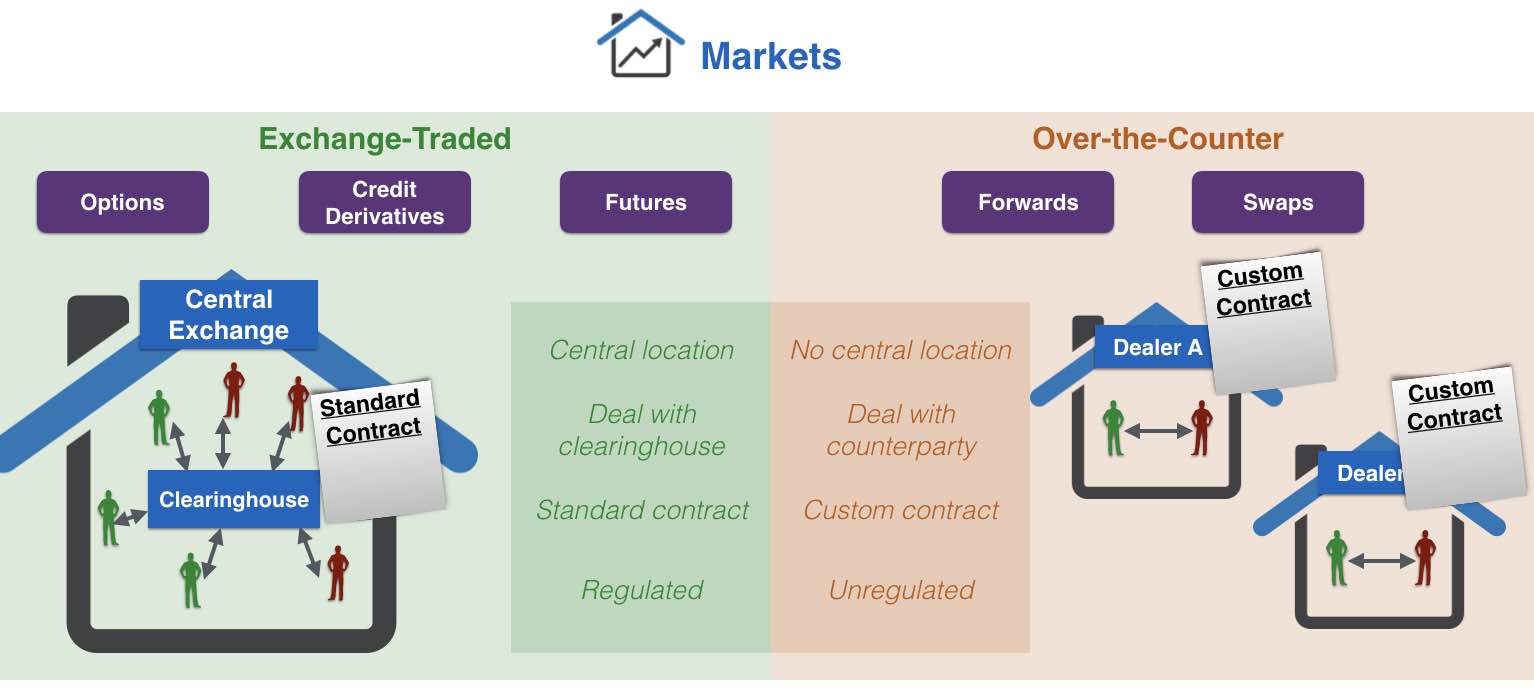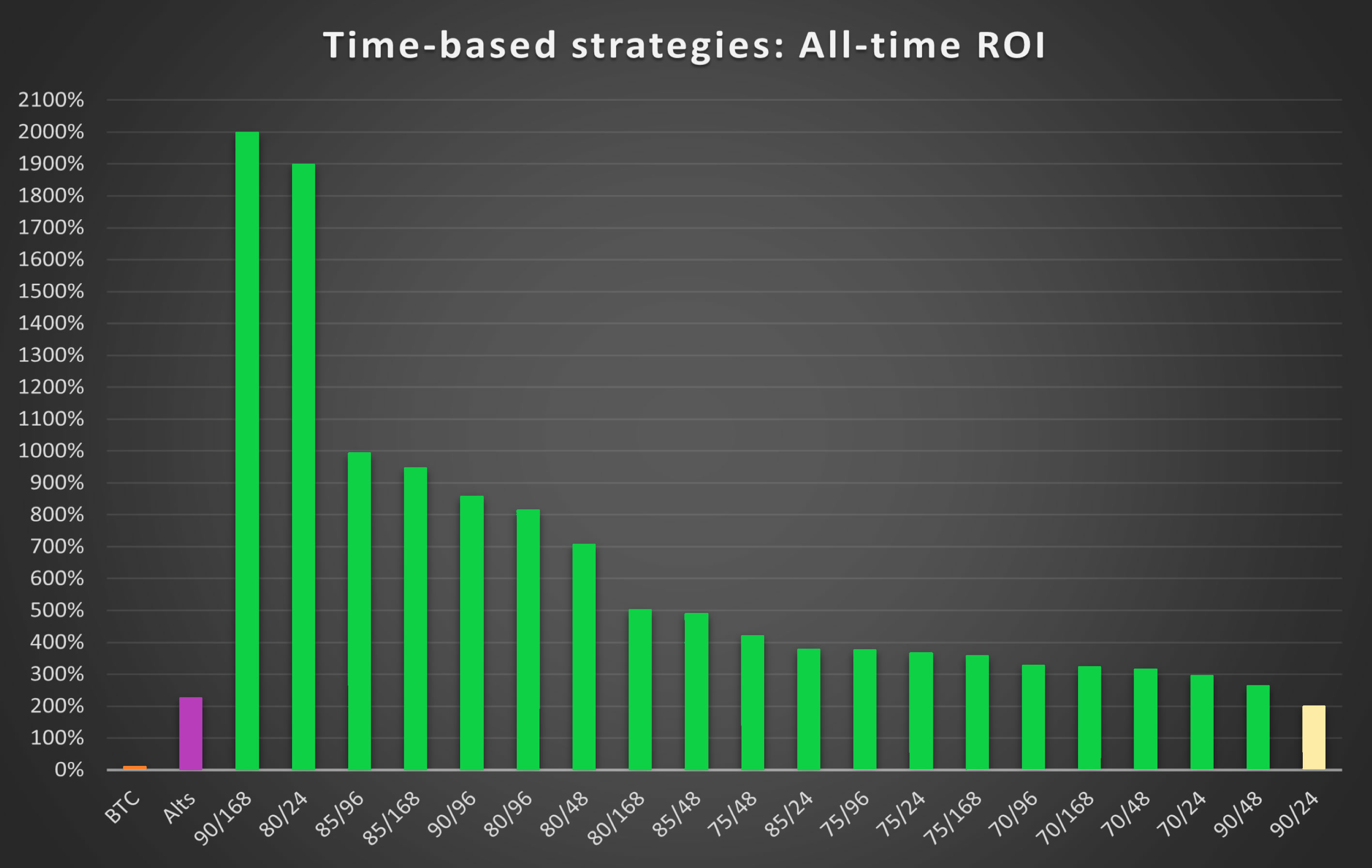Introduction
Liquidity is a fundamental concept in the world of finance. It refers to the ease and speed with which an asset, such as money or investment, can be converted into cash without incurring a significant loss in value. When it comes to managing our finances, we often encounter a choice between investments and savings tools. While both options play a crucial role in achieving our financial goals, they differ significantly in terms of liquidity.
Investments, such as stocks, bonds, real estate, and mutual funds, are generally less liquid compared to savings tools like savings accounts, certificates of deposit, and money market accounts. This means that investments are not readily available for immediate cash withdrawal, whereas savings tools offer quick accessibility to our funds.
The disparity in liquidity between investments and savings tools is rooted in several factors, including the nature of the assets, the market conditions, and the time required for conversion. It’s important to understand these differences and their impact on our financial decisions.
In this article, we will explore why investments are less liquid than savings tools. We will discuss the factors influencing liquidity in both options and examine the risks and trade-offs associated with each. By gaining a deeper understanding of these concepts, we can make informed decisions about managing our financial resources.
Definition of Liquidity
Liquidity is a concept that refers to the ability to convert an asset into cash quickly and without incurring a significant loss in value. It represents the degree of ease with which an asset can be bought or sold in the market. In simpler terms, liquidity measures how quickly an asset can be turned into usable cash.
When it comes to financial instruments, including investments and savings tools, liquidity plays a crucial role. Assets that are highly liquid can be readily converted into cash, providing flexibility and accessibility to funds. On the other hand, assets with low liquidity may require more time or effort to convert, limiting their usefulness in financial transactions.
Liquidity is typically measured on a spectrum, ranging from highly liquid to illiquid. Highly liquid assets are those that can be easily bought or sold without significantly impacting their market value. Cash is the most liquid asset, as it can be readily used for purchases or withdrawals without any delay.
On the other end of the spectrum, we find illiquid assets. These are assets that cannot be easily converted into cash or may require considerable time and effort to do so. Examples of illiquid assets include real estate properties, certain types of investments, and collectibles.
Between these two extremes, we have assets with varying degrees of liquidity. For example, savings accounts and money market funds are considered highly liquid as they can be accessed quickly. Stocks and bonds, while still relatively liquid, may require more time to sell and convert into cash.
It’s important to note that the liquidity of an asset is not solely determined by its type or category. Market conditions and the specific time and method of conversion can also impact liquidity. While an asset may generally be considered liquid, it could become less liquid during periods of market volatility or when there is limited demand for that particular asset.
In summary, liquidity is a fundamental concept in finance that measures the ease of converting an asset into cash. Understanding the liquidity of different financial instruments is essential for making informed decisions about managing our funds and achieving our financial goals.
Differences Between Investments and Savings Tools
Investments and savings tools are two distinct financial options that individuals use to manage and grow their money. While both serve different purposes, one notable difference between them is the level of liquidity they offer.
1. Nature of the Assets: Investments typically involve purchasing assets that have the potential to generate returns over time, such as stocks, bonds, real estate, or mutual funds. These assets are subject to market fluctuations and may require more time and effort to convert into cash. Savings tools, on the other hand, involve depositing funds into accounts that accrue interest, such as savings accounts, money market accounts, or certificates of deposit. These tools are designed for short-term or immediate access to funds.
2. Accessibility and Withdrawal Process: Investments generally have a more involved process for accessing funds. Selling an investment may require interacting with a broker, placing a sell order, and waiting for the transaction to settle. The time required for this process can range from a few days to several weeks, depending on the type of investment and market conditions. In contrast, savings tools offer more immediate access to funds. Withdrawing funds from a savings account or money market account can usually be done online or through an ATM, providing quick and convenient access to cash.
3. Potential Returns and Risk: Investments carry a higher potential for returns compared to savings tools. The value of investments can increase over time, generating capital gains or earning dividends. However, investments also come with a higher level of risk. The value of investments can fluctuate, and there is a possibility of incurring losses. Savings tools typically offer more stable returns but at a lower rate of return compared to investments. They are generally considered a safer option for preserving capital.
4. Market Conditions: The liquidity of investments and savings tools can be influenced by market conditions. When the market is volatile or experiencing a downturn, investments may become less liquid due to reduced demand or uncertainty. On the other hand, savings tools maintain their liquidity regardless of market conditions, as they are usually backed by deposit insurance or other guarantee mechanisms.
In summary, investments and savings tools differ in terms of the nature of the assets, accessibility and withdrawal processes, potential returns and risk, and the impact of market conditions on liquidity. Understanding these differences is crucial for individuals to make informed decisions about how to allocate their funds and manage their financial goals effectively.
Factors Affecting Liquidity of Investments
The liquidity of investments can vary based on several factors. These factors play a crucial role in determining how quickly and easily an investment can be converted into cash. Understanding these factors can help investors make informed decisions and manage their investments effectively.
1. Market Demand and Supply: The level of demand and supply for a particular investment can significantly affect its liquidity. Investments that are in high demand, such as popular stocks or bonds, tend to be more liquid as there are more potential buyers. Conversely, investments with limited demand or niche markets may have lower liquidity, as finding a buyer becomes more challenging.
2. Type of Investment: Different types of investments can have varying levels of liquidity. For example, publicly traded stocks and exchange-traded funds (ETFs) are generally more liquid due to their active trading on stock exchanges. On the other hand, certain types of alternative investments, such as private equity or real estate, may have lower liquidity as they are typically traded in a less liquid secondary market.
3. Market Conditions: Market conditions can have a significant impact on the liquidity of investments. During periods of market volatility or economic uncertainty, investors may become hesitant, leading to lower trading volumes and decreased liquidity. Conversely, during periods of market stability and positive sentiment, liquidity tends to be higher as investors are more willing to participate in buying and selling activities.
4. Time Required for Settlement: The time involved in settling an investment transaction can influence its liquidity. Investments that settle quickly, such as stocks and bonds traded on major exchanges, are generally more liquid. On the other hand, investments with longer settlement periods, such as certain types of derivatives or private placements, may have lower liquidity as it takes more time for the transaction to complete.
5. Size of the Investment: The size of an investment can also impact its liquidity. Large investments can be more challenging to sell quickly without significantly impacting the market price. If the market cannot absorb a large sell order, it may result in a potential loss of value or an extended time to complete the sale.
6. Lock-up Periods and Exit Restrictions: Some investments, particularly private equity or hedge funds, may have lock-up periods or exit restrictions. These restrictions limit the ability of investors to sell or convert their investments into cash for a certain period. This lack of immediate liquidity should be considered before investing in such assets.
In summary, factors such as market demand and supply, type of investment, market conditions, settlement time, investment size, and lock-up periods can influence the liquidity of investments. Understanding these factors is crucial for investors to make informed decisions and manage their investment portfolios effectively.
Risk vs. Liquidity Trade-off
When it comes to investments, there is often a trade-off between liquidity and risk. The level of liquidity an investment offers is closely tied to the level of risk it carries. Understanding this trade-off is crucial for investors to make informed decisions and align their investment choices with their financial goals and risk tolerance.
Liquidity and Risk: Generally, investments that are more liquid tend to have lower levels of risk. This is because liquid investments, such as stocks traded on major exchanges, are easier to sell quickly if needed, reducing the potential for losses. On the other hand, less liquid investments, such as real estate or private equity, may have potentially higher returns but also come with greater risk due to limited marketability and longer timeframes for selling.
Illiquidity and Reward: Investments with lower liquidity often come with the potential for higher rewards. For example, private equity or venture capital investments may offer significant returns over the long term, but it may be challenging to access the invested capital until a specific exit opportunity arises. Investors must consider their investment horizon, risk appetite, and financial needs to determine whether the potential rewards outweigh the illiquidity risk.
Emergency Funds and Liquidity: Maintaining a sufficient emergency fund is crucial for financial security. Emergency funds should consist of highly liquid assets, such as cash or savings accounts, to ensure quick access to funds in times of unexpected expenses or financial hardship. While investments can generate higher returns, relying solely on investments for emergency funds can be risky, as they may not be readily accessible without incurring losses during market downturns.
Diversification and Liquidity: Diversification is a key strategy for managing risk in an investment portfolio. By investing in a mix of assets with varying levels of liquidity, investors can strike a balance between risk and liquidity. Liquidity within a diversified portfolio allows for flexibility in rebalancing or taking advantage of investment opportunities, while less liquid assets provide potential long-term growth and risk reduction benefits.
Understand Your Risk Tolerance: It is essential for investors to understand their risk tolerance when considering the liquidity of their investments. Some individuals may have a higher tolerance for illiquidity if they have a longer investment horizon or can afford to lock up their funds. Others may prioritize liquidity to have quick access to cash for short-term needs or peace of mind.
In summary, the trade-off between liquidity and risk is an important consideration when making investment decisions. Investors need to assess their risk tolerance, investment horizon, and financial goals to strike the right balance between liquidity and potentially higher returns. Diversification and asset allocation can help manage the trade-off and align investment choices with individual preferences and circumstances.
Factors Affecting Liquidity of Savings Tools
The liquidity of savings tools can vary depending on several factors. These factors can impact how quickly and easily funds can be accessed from savings accounts, money market accounts, and other similar financial instruments. Understanding these factors is essential for individuals to effectively manage their financial resources and maintain access to their funds when needed.
1. Account Terms and Conditions: The terms and conditions of a savings tool can affect its liquidity. Some savings accounts may have withdrawal limitations, such as a limited number of transactions per month or early withdrawal penalties. Before choosing a savings tool, it’s important to carefully review and understand the terms and conditions to ensure they align with your liquidity needs.
2. Accessibility Options: The accessibility options provided by the financial institution can impact the liquidity of savings tools. Online banking and mobile banking platforms have made it easier for individuals to access their funds and conduct transactions quickly. Additionally, ATMs and debit cards associated with savings accounts can provide convenient access to cash when needed.
3. Deposit Insurance: The presence of deposit insurance can play a role in the perceived and actual liquidity of savings tools. Deposit insurance programs, such as the Federal Deposit Insurance Corporation (FDIC) in the United States, provide assurance that a certain amount of funds deposited in an insured savings account will be protected in the event of a bank failure. This can instill confidence in the liquidity of the savings tool and ensure that individuals can access their insured funds.
4. Interest Rates: Interest rates offered by savings tools can influence their liquidity. Higher interest rates may attract more individuals to deposit funds in a savings tool, potentially leading to increased demand for withdrawals. Financial institutions need to manage their liquidity to accommodate these withdrawals while maintaining attractive interest rates. This can be achieved through careful asset management and liquidity planning.
5. Economic Conditions and Financial Stability: The overall economic conditions and the financial stability of the institution offering the savings tool can impact its liquidity. In times of economic downturn or a financial crisis, individuals may be more inclined to withdraw their funds from savings tools to meet immediate cash needs. Financial institutions need to maintain adequate liquidity to handle these potential surges in withdrawal demand.
6. Market Interest Rates: Market interest rates can affect the liquidity of savings tools, especially those with variable interest rates. If market interest rates rise, individuals may be tempted to move their funds to higher-yielding investment options, leading to potential withdrawals from savings tools. Financial institutions need to anticipate these changes and manage their liquidity accordingly.
In summary, factors such as account terms and conditions, accessibility options, deposit insurance, interest rates, economic conditions, and market interest rates can impact the liquidity of savings tools. Understanding these factors is essential for individuals to make informed decisions about the savings tools they choose and to ensure they have access to their funds when needed.
Benefits of Investing Despite Lower Liquidity
Although investments are generally less liquid compared to savings tools, there are several compelling benefits that make investing a worthwhile choice despite the lower liquidity. Understanding these benefits can help individuals make informed decisions about allocating their financial resources and achieving their long-term financial goals.
1. Potential for Higher Returns: One of the primary benefits of investing is the potential for higher returns compared to savings tools. Investments such as stocks, bonds, and real estate have historically provided higher average returns over the long term. By investing in assets that have the potential to grow in value or generate income, individuals can build wealth and outpace inflation, ultimately achieving their financial goals more effectively.
2. Diversification and Risk Management: Investing allows individuals to diversify their portfolio and mitigate risk. By allocating funds across different asset classes, sectors, and geographic regions, investors can reduce the impact of any one investment on their overall portfolio. Diversification helps spread risk and can provide a smoother investment journey, even if some individual investments may be less liquid than others.
3. Hedge Against Inflation: Investing can be an effective hedge against inflation. Over time, the value of money erodes due to inflationary pressures. By investing in assets that have the potential to outpace inflation, individuals can preserve and grow their purchasing power. While savings tools may provide a certain level of interest, investments have the potential for higher returns that can better keep pace with or exceed inflation.
4. Long-Term Financial Planning: Investing plays a crucial role in long-term financial planning. Whether it’s saving for retirement, funding education expenses, or achieving other long-term goals, investing offers the opportunity to build a substantial nest egg over time. By starting early and investing consistently, individuals can take advantage of compounding gains and benefit from the power of time in growing their investments.
5. Tax Advantages: Investing can provide several tax advantages that can help individuals optimize their overall tax position. Investment vehicles such as individual retirement accounts (IRAs), 401(k) plans, or tax-efficient funds may offer tax deductions, tax-deferred growth, or even tax-free withdrawals, depending on the specific investment and the jurisdiction in which it is held. These tax advantages can enhance investment returns and create opportunities for additional savings.
6. Wealth Building: Investing allows individuals to build wealth over time. By consistently investing a portion of their income, individuals have the potential to accumulate assets that can appreciate in value or generate passive income. This wealth-building potential can provide financial stability, create opportunities for future generations, and achieve broader financial objectives beyond short-term liquidity needs.
In summary, investing, despite its lower liquidity compared to savings tools, offers several significant benefits. These benefits include the potential for higher returns, diversification and risk management, protection against inflation, long-term financial planning, tax advantages, and the opportunity to build wealth. By carefully balancing the liquidity needs with long-term investment goals, individuals can reap the rewards of investing and achieve their financial aspirations.
Conclusion
When it comes to financial management, understanding the differences between investments and savings tools is essential. While investments offer the potential for higher returns, they are typically less liquid compared to savings tools. In contrast, savings tools provide quick and easy access to funds but may offer lower returns. The choice between these options depends on an individual’s financial goals, risk tolerance, and liquidity needs.
Factors such as market demand and supply, type of investment, market conditions, settlement time, investment size, account terms and conditions, accessibility options, deposit insurance, interest rates, economic conditions, and market interest rates impact the liquidity of both investments and savings tools. By understanding these factors, individuals can make informed decisions about which option is most suitable for their unique circumstances.
Despite investments having lower liquidity, they offer numerous benefits that make them attractive choices. Investments have the potential for higher returns, provide opportunities for diversification and risk management, act as a hedge against inflation, support long-term financial planning, offer tax advantages, and facilitate wealth building. These benefits can help individuals achieve their financial goals, build wealth over time, and secure a more stable financial future.
On the other hand, savings tools offer the advantage of quick and easy access to funds, ensuring sufficient liquidity for emergency expenses and short-term needs. They provide a secure and reliable place to store money and often come with deposit insurance for added peace of mind.
In conclusion, striking a balance between investments and savings tools is crucial for a well-rounded financial plan. By considering individual liquidity needs, risk tolerance, investment goals, and time horizons, individuals can effectively manage their financial resources, achieve their goals, and build long-term wealth.

























